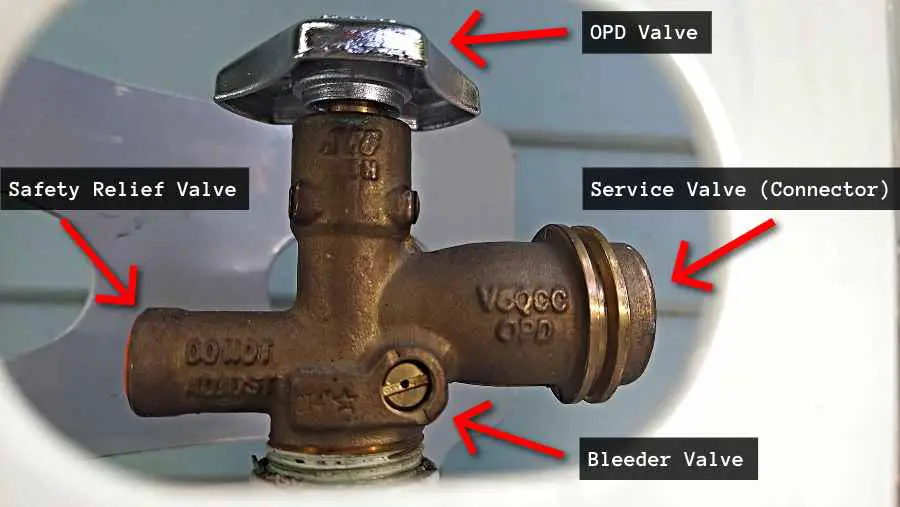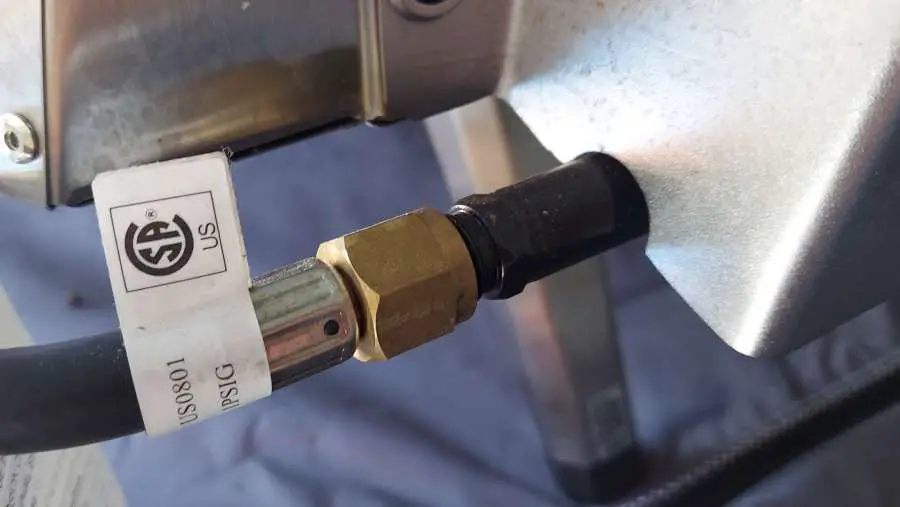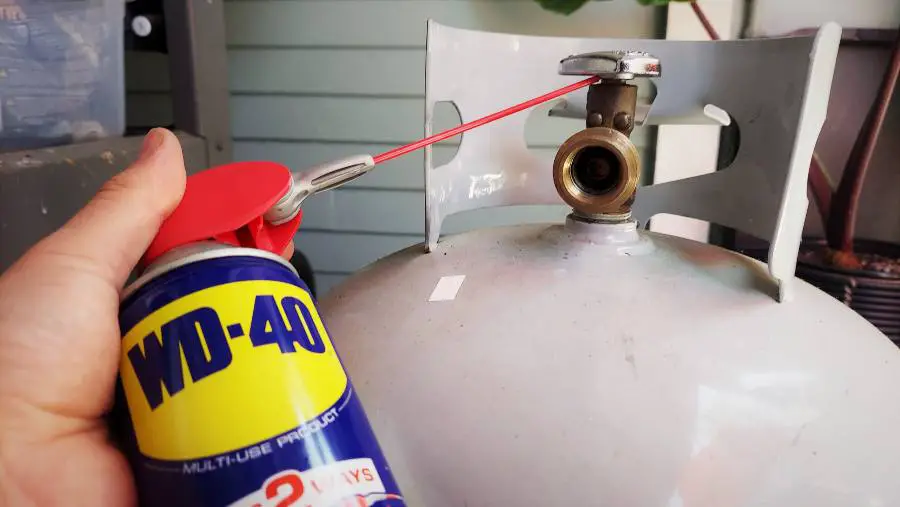Last Updated on May 23, 2024 by Dan Campbell
When using a propane tank, it is typically recommended to open the valve all the way, however, it is not required. Depending on the tank’s valve and regulator, only opening the valve slightly may result in reduced output or your appliance not operating, but for the most part, it should not cause any issues.
Many people believe if you only open a valve part-way, it will reduce the amount of propane coming out of the tank, and save gas. However, the regulator is what controls the amount of gas flow and not the valve. Since the gas is at such a high pressure, even opening the valve slightly will allow enough gas to exit the tank and into the regulator which then restricts the flow of propane to operating pressure.
Depending on the tank’s fill level, the ambient temperature, the type of valve attached, and the regulator flow rate, not opening the valve all the way can potentially reduce the amount of gas exiting the tank. But in most situations, the valve will not control the rate of flow of propane, and should not be used as a means of regulating how much propane is being used.
Propane Tank Safety Features
Propane tanks come with a handful of safety features, namely the OPD shut-off valve, the safety relief valve, and the regulator. Other features such as the foot ring and neck ring won’t stop a leak, but they do help prevent tip-overs or potential damage to the tank and the valves.

People assume that due to safety features, the valve needs to be opened fully. However, the OPD valve (Overfill Prevention Device) safety features only activate when being overfilled or the tank is tipped over. Similarly, the safety relief valve and regulator are not affected by the shut-off valve being fully opened.
OPD Valve
The OPD Valve (Overfill Prevention Device) ensures that propane tanks do not overfill, as well as shut off gas flow if the tank tips over. Similar to how a toilet fill valve stops when an internal float reaches a certain level, the OPD valve has a small floating device inside the tank that will cause the valve to shut when it reaches a certain level. This float will also trigger if the propane tank is tipped over. Propane tanks are only filled to 80% capacity, so for example a 500 gallon tank will only hold 400 gallons of usable propane. Take a look at my article on how many gallons of propane are in a tank to determine how much usable propane you have, as well as the total BTU capacity.
OPD valves will also only allow fuel to exit the tank when the correct and complete connection is made. When nothing is attached to the tank, OPD valves will not allow gas to escape even if the valve is turned.
Safety Relief Valve
The safety relief valve is a part of the main shut-off valve and will trigger if the propane tank has too much pressure inside. Propane is under intense pressure inside the tank which allows the propane to stay in liquid form while the rest of the tank is gas. The gaseous propane is what travels through the regulator/hose and into your appliance.
If a propane tank heats up, the gaseous propane in the tank will expand, increasing the pressure and potentially creating a dangerous situation. When this occurs, the safety relief valve will automatically open on its own to release the pressure within the tank.
This is one reason it is important not to transport propane inside the passenger area of a car, and to also ensure your propane tank is always kept somewhere in the shade and away from heat sources, as well as stored in a well-ventilated area. If the safety relief valve triggers due to the tank being too hot, it can fill the passenger area with propane gas, or inside the space it is being stored. This is why propane tanks should never be stored indoors.
Propane Regulator
The regulator is not actually a part of the tank, but it plays a crucial role in the operation of propane tanks and any appliance connected to them. Without a regulator, propane gas would be leaving the tank at whatever pressure the gas is inside. Because each appliance requires a specific pressure of gas to operate, a regulator will restrict the flow of gas. This works both ways, so if for example, the hose were to be cut when an appliance is connected and turned on, the regulator would restrict the flow of gas, allowing you to turn off the propane tank with minimal leaking.

Sometimes however, you can accidentally trip this safety feature unknowingly, and cause your appliance to receive a low flow of propane which in turn causes weak flames or makes your appliance inoperable. This is usually caused by opening the propane valve while the connected appliance is already on, such as having a gas grills burner dial turned up.
This causes a free flow of propane through the hose and triggers the low-flow safety feature, which you can sometimes hear click when it engages. To fix this, you can simply reset the regulator.
Resetting the regulator is as simple as turning off the appliance connected to the propane tank, closing the propane tank valve all the way off, and then slowly opening the valve again.
Do You Need To Turn Off The Propane Tank After Using
After you finish using your propane tank whether you’re grilling or using it for a heater, you should always completely turn off the propane valve to avoid possible fires or explosions. It might seem more convenient to leave the propane tank on, however, this can lead to potentially dangerous situations.o
For example, let’s say you leave your propane tank on when connected to a bbq for convenience. If one of the burner knobs is accidentally turned on the grill will begin to fill with propane gas. All it takes is for an ignition source to light the propane to create a potential fire or explosion.
Therefore, it is important that when no longer in use, you always completely close the propane tank valve.
Additional Propane Safety Tips
When working with propane tanks, you should always use caution and follow a few safety tips:
- Always handle propane tanks with care
- Regularly inspect the tank, hose, and regulator for any damage
- Propane tanks should always remain vertical, so make sure to secure them properly if you are transporting them
- Never smoke near propane tanks, and keep them away from heat sources
- Avoid keeping the propane tank in the passenger area of a car, and always store them in well-ventilated spaces.
- Always check for leaks when connecting an appliance. You can use specially made gas leak detecting spray, or use a mix of dawn soap and water to look for bubbles forming.
Hopefully, I answered any questions you had about completely opening or closing the valve on a propane tank. If you have any questions or comments please reach out and let me know.
Thank you and God Bless!




